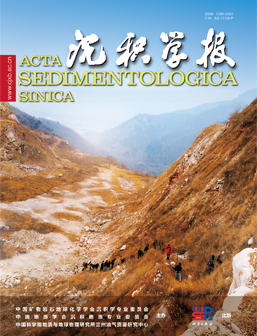Evolution Mechanisms and Sedimentary Models of Delta Channel-Lobe Systems: Based on physical simulation experiments of Cretaceous sedimentary features in the eastern depression of the Doseo Basin
doi: 10.14027/j.issn.1000-0550.2025.003
- Received Date: 2024-09-02
- Available Online: 2025-03-04
-
Key words:
- lobe-channel system /
- sedimentary model /
- simulated experiments /
- depositional evolution /
- Doseo Basin
Abstract: [Objective] To understand the distribution patterns of Cretaceous sand bodies in the eastern depression of the Doseo Basin, this study employs physical sedimentation simulation techniques. An experimental setup with a movable baseboard was designed to investigate the evolution mechanisms of the channel-lobe system in the study area and to develop an effective regional sedimentary model, providing theoretical support for future favorable zone predictions. [Methods] Building on previous research on lobe development and evolution and channel classification [17], this study introduces a new classification method for lobes. Lobes are categorized into four types: agglomerative, superimposed, erosional, and amalgamated. Additionally, to accurately describe the development features and evolution of each lobe type, the study further analyzes the internal structures of lobes and identifies various constituent units. [Results and Discussions] (1) A consistent overlapping relationship exists between channels and lobes, where the migration, evolution, or disappearance of channels leads to the formation of new lobes. (2) Within the channel-lobe system, three main evolution mechanisms are driven by hydrodynamic strength: erosion of existing lobes, formation of lobes dominated by sandy deposition, and formation of mud layers dominated by fine-grained deposition. (3) The characteristics of channels determine the type of lobe development, while lobe morphology is influenced by factors such as sedimentary slope, tectonic activity, base level, and sediment source conditions. (4) The connectivity of sand bodies is affected by the constituent units of lobes, their contact relationships, lobe properties, and the types of lobe complexes. Later channel evolution can improve sand body connectivity to some extent. (5) The eastern depression of the Doseo Basin exhibits two sedimentary models: deep-water and shallow-water delta systems. In the deep-water delta model, the channel evolution area is larger, and connectivity improvements are more pronounced. In contrast, the shallow-water delta model features larger lobe deposition areas and wider planar distribution of lobes. [Conclusion] The new lobe classification method and the channel-lobe system evolution mechanism are applicable to the study of sand body connectivity and sedimentary models in the study area, and they are expected to be widely used in future delta sedimentary simulation research.
| Citation: | Evolution Mechanisms and Sedimentary Models of Delta Channel-Lobe Systems: Based on physical simulation experiments of Cretaceous sedimentary features in the eastern depression of the Doseo Basin[J]. Acta Sedimentologica Sinica. doi: 10.14027/j.issn.1000-0550.2025.003 |






 DownLoad:
DownLoad: